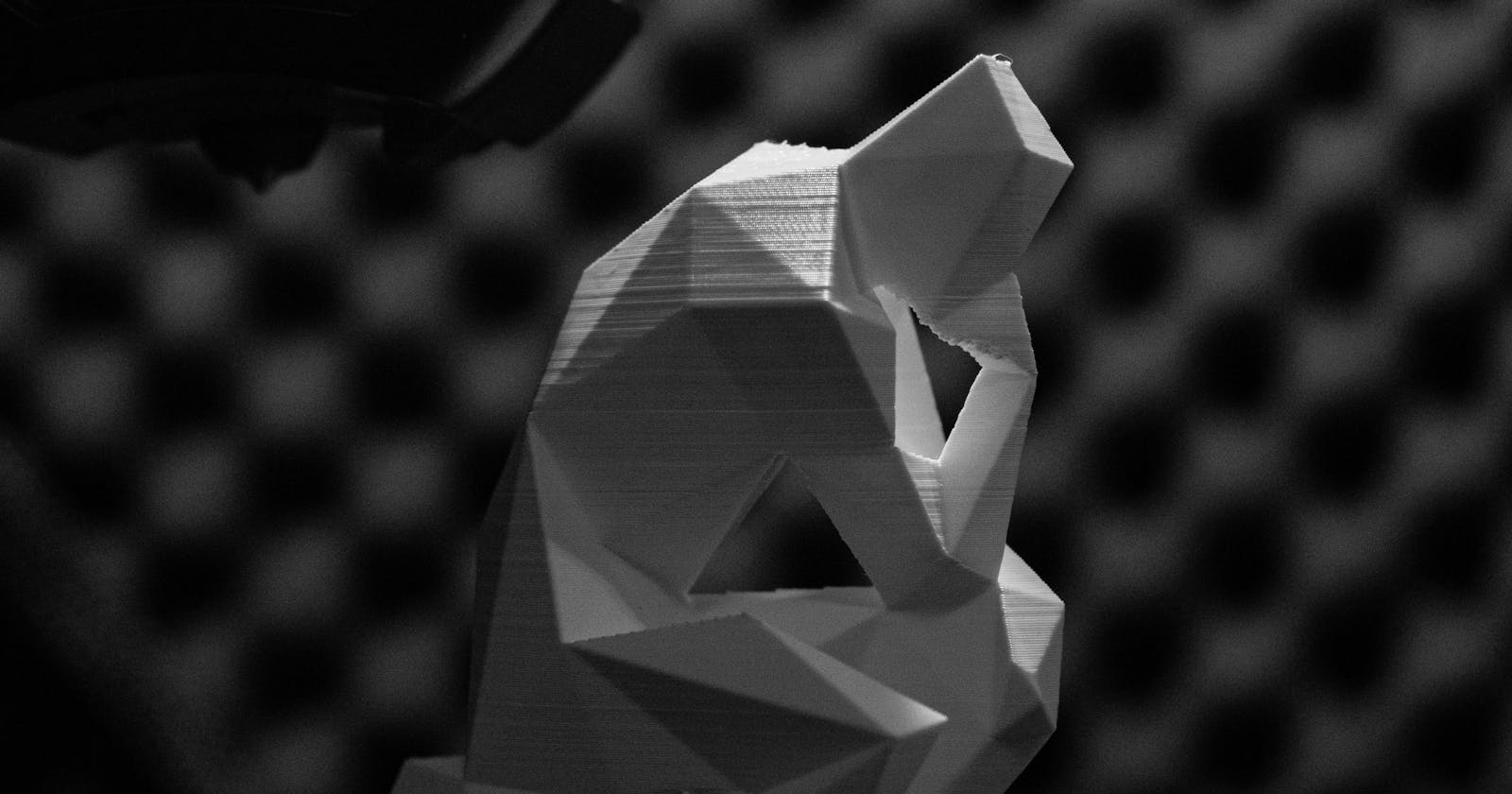3D Printing : A New Initiative In The Society.
Helpful To Society In Various Forms Like Medical, Product Design, etc.
Table of contents
Hey Developers 👋👋. Hope you all are doing well.
For week 3 of 4 Articles 4 Weeks Writeathon, I am going to write on a technology which would be most revolutionary for solving social problems like Effective Treatment, Circular Product Design, Manufacturing Hubs, etc.
Introduction.
Invention.
The first documented iterations of 3D printing can be traced back to the early 1980s in Japan. In 1981, Hideo Kodama was trying to find a way to develop a rapid prototyping system. He came up with a layer-by-layer approach for manufacturing, using a photosensitive resin that was polymerized by UV light.
What is 3d printing technology?
3D printing, also known as additive manufacturing, creates a three-dimensional object layer-by-layer using a computer-created design. 3D printing can create physical objects from a geometrical representation by successive addition of material.
Types of 3d printing technology.
There are different types of 3d printing technology used worldwide. Some of them are as follows:
1. Binder jetting:
Binder jetting is a rapid prototyping and 3D printing process in which a liquid binding agent is selectively deposited to join powder particles. The binder jetting technology uses jet chemical binder onto the spread powder to form the layer.
2. Directed energy deposition:
Directed energy deposition is a more complex printing process commonly used to repair or add additional material to existing components. Directed energy deposition has a high degree of control of grain structure and can produce a good quality of the object.
3. Powder bed fusion:
The powder bed fusion process includes electron beam melting (EBM), selective laser sintering (SLS), and selective heat sintering (SHS) printing techniques. This method uses either an electron beam or laser to melt or fuse the material powder.
There are more techniques also, but these are mostly used.
Applications of 3d printing.
 There are several applications of 3d printing but, here I am gonna focus on the Medical and Health Industry.
There are several applications of 3d printing but, here I am gonna focus on the Medical and Health Industry.
It has been forecast that 3D printing in the medical field will be worth $3.5bn by 2025, compared to $713.3m in 2016. The industry’s compound annual growth rate is supposed to reach 17.7% between 2017 and 2025.
How it is useful to people of society.
The four main applications revolutionizing the industry are:
It can be used to replace human organ transplants.
To speed up surgical procedures.
To produce cheaper versions of required surgical tools.
To improve the lives of those reliant on prosthetic limbs.
How?

- Bioprinting tissues and organoids.
Rather than printing using plastic or metal, bioprinters use a computer-guided pipette to layer living cells, referred to as bio-ink, on top of one another to create artificial living tissue in a laboratory.
These tissue constructs or organoids can be used for medical research as they mimic organs on a miniature scale.
- Surgery preparation assisted by the use of 3D printed models.
3D printing has been used to create patient-specific organ replicas that surgeons can use to practice before performing complicated operations.
This technique 👆 has been proven to speed up procedures and minimize trauma for patients. This type of procedure has been performed successfully in surgeries ranging from full-face transplants to spinal procedures and is beginning to become routine practice.
In January 2018, surgeons in Belfast successfully practiced a kidney transplant for a 22-year-old woman using a 3D printed model of her donor’s kidney. Using the 3D printed replica of his kidney, surgeons were able to assess the size and placement of the tumor and cyst.
- 3D printing of surgical instruments.
Sterile surgical instruments, such as forceps, hemostats, scalpel handles, and clamps, can be produced using 3D printers. These instruments can be used to operate on tiny areas without causing unnecessary extra damage to the patient.
One of the main benefits of using 3D printing rather than traditional manufacturing methods to produce surgical instruments is the production costs are significantly lower.
- Custom-made prosthetics using 3D printing.
It is common for amputees to wait weeks or months to receive prosthetics through the traditional route; however, 3D printing significantly speeds up the process, as well as creating much cheaper products that offer patients the same functionality as traditionally manufactured prosthetics.
The lower price point of these products makes them particularly applicable for use with children, who quickly outgrow their prosthetic limbs.
3D printing can be used to produce prosthetic limbs that customized.
3D printing also allows the patient to design a prosthetic that corresponds directly to their needs. For example, Body Labs has created a system that allows patients to model their prosthetic on their own limbs through scanning in order to create a more natural fit and appearance. Plus, researchers at the Massachusetts Institute of Technology have sought to design more comfortable prosthetic sockets.

Conclusion.
In this article, there is a rich landscape of 3D printing in the Medical and Health industry. At present, 3D printing technology is beginning in the medical field, it offers many benefits to the people, companies, and government.
That's all for today. Thank you for staying till the end. Stay tuned for the next article by subscribing to my newsletter.
Till then keep learning and keep exploring.


